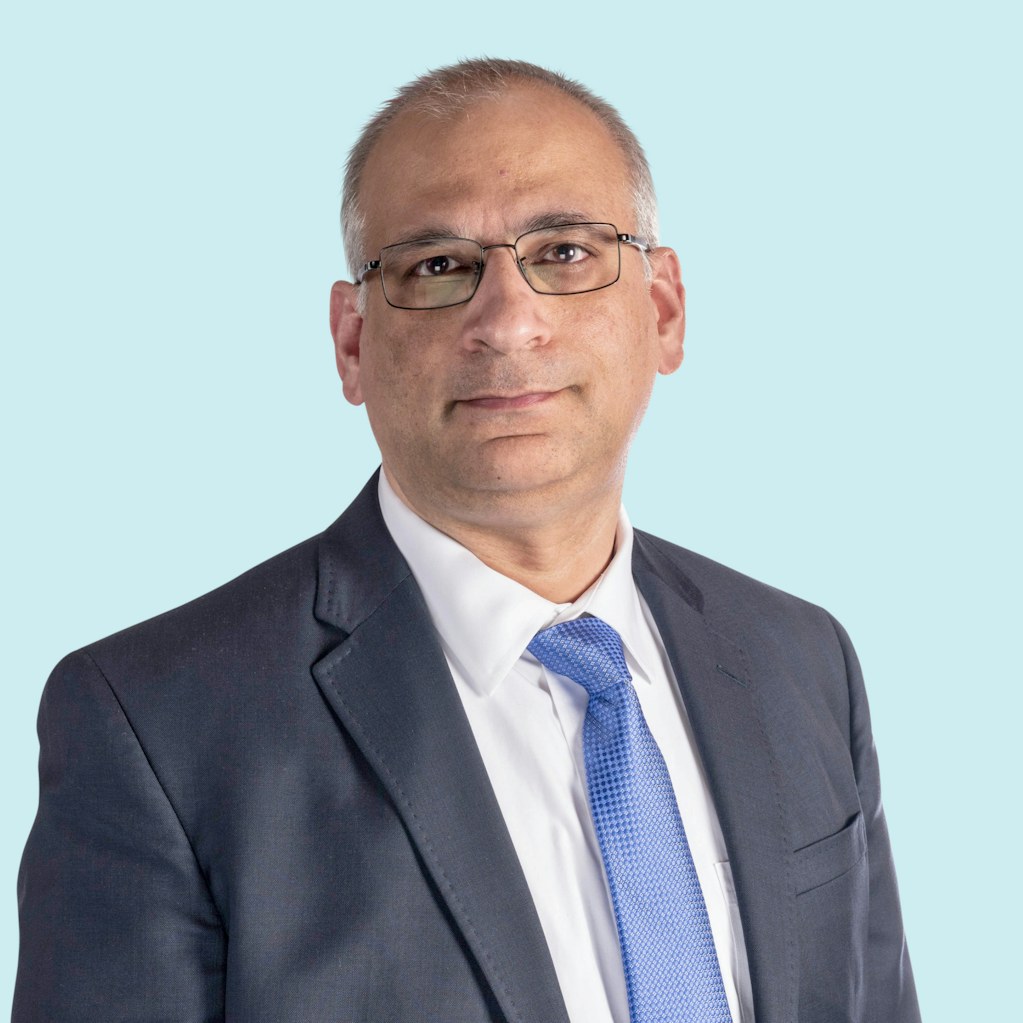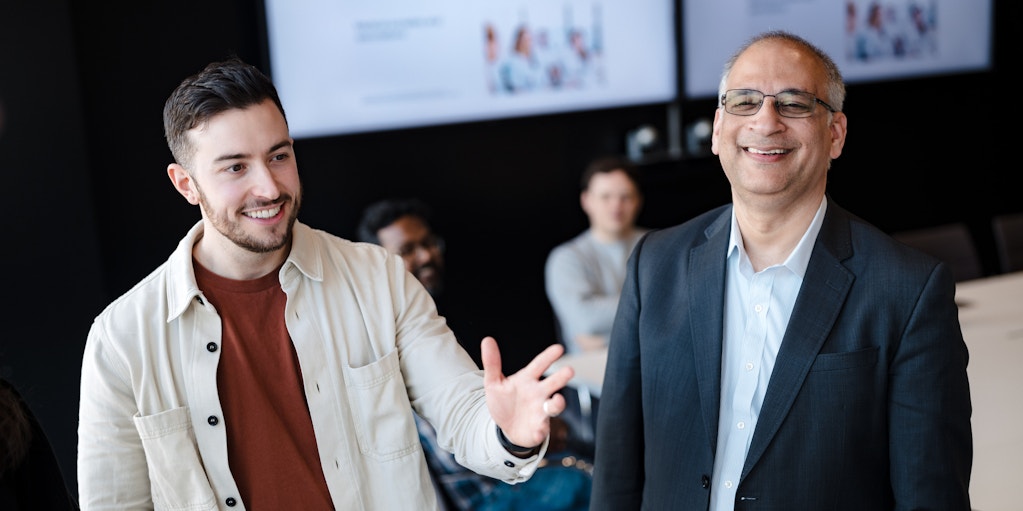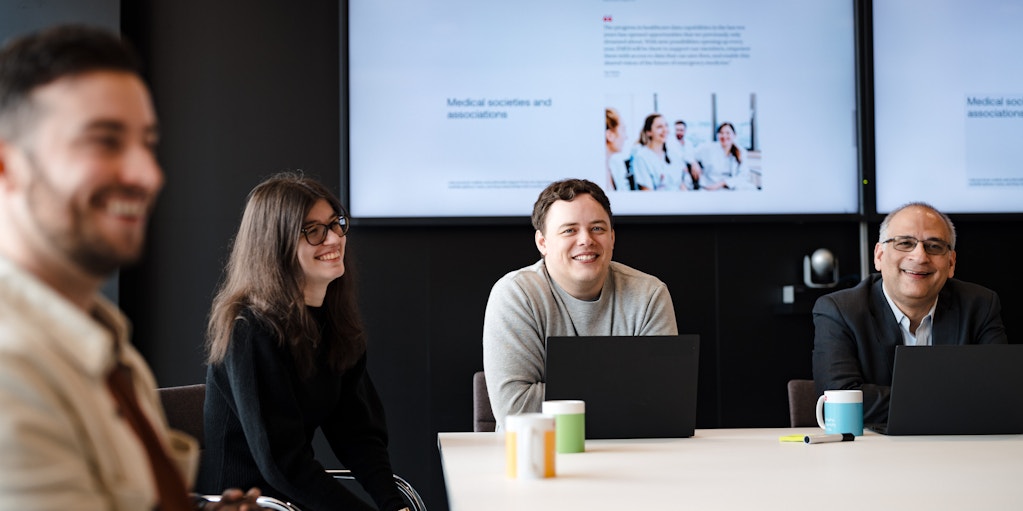
15 minutes with: Nilesh Chandra
Tags
Our experts are at the forefront of bringing ingenuity to life for our clients. They accelerate new growth ideas from concept, through design and development to commercial success. And they revitalise organisations with the leadership, culture, systems and processes to make innovation a reality.
In this series, you’ll meet some of the brilliant minds creating change every day.

What is your background and what made you want to join PA?
I’m originally from India and have a technical background. I was an undergraduate in electrical engineering and then got my MBA here in the US from Cornell. I joined PA straight out of Cornell. I ended up joining PA because I liked the size, the entrepreneurial energy, and the flexibility. The other consulting firms seemed very cookie-cutter. I’m now coming up to 18 years at PA. I’ve built my whole career here – I’m almost a lifer at this point.
How would you describe your job to someone you had never met before?
PA has changed a lot and evolved over the last 18 years. When I started as a consultant, I used to do a lot of ERP and large system implementation projects. I then migrated into IT strategy and advisory work, and then moved to business strategy and advising clients on business design. Somewhat coincidentally, I found myself working on a data registry project about a decade ago, which then led to a second data registry project, and a third, and before you know it, I was an expert in healthcare data. For the last 10 years, that’s primarily what I’ve focused on.
I help clients build and scale up data operations and data businesses. I’ve done this across the entire value chain, from the upfront strategy and the business case for investment all the way through to picking and building the right technology platform, and scaling technology solutions, the operating model, and the team.”
How has your work changed in recent years?
Strategically in PA, we decided about three years ago to move more strongly into the healthcare data platform space, and that’s the work that I lead now. Previously, our work used to be much more on the advisory side. We would help clients choose the right platform, choose the right vendor, build the operating model around it, and so on.
Now, we build data platforms for clients, leveraging the digital and data science capabilities we have in PA globally, whether it’s in Belfast or London or Boston. We bring these global teams together on a larger scale for longer duration engagements with clients, which is I think the biggest change. Three years ago, the typical duration of my project would be two to three months. Now, the work I’m actively engaged with clients spans many years.

Why do you focus your work on healthcare data?
I think we are living on the cusp of transformational change in healthcare where we can now develop new therapies and treatments in ways we never could before. As a result, the body of medical knowledge is growing exponentially. At the same time, front line clinicians in healthcare are more burdened than ever. It is a situation ripe for human error and mistakes. I have seen first-hand the impact that a misdiagnosis or an incorrect treatment can have on people’s lives and families.
Healthcare data and AI algorithms are tools that will eventually help solve these issues by augmenting busy clinicians and helping them see hard to spot patterns in the data. To enable all that, we first need to build the infrastructure – platforms that securely collect and house large datasets – to enable all those developments. That is my purpose.
What would you say is different about working at PA?
I think the biggest difference is the relatively flat, non-hierarchical structure of the organization. It is very easy to reach out and ask for help. A few weeks ago, I asked our CEO to support me in a client pursuit. I don’t think there are many companies in the world of our size and scale where people can say the CEO made that time for them at relatively short notice. That’s one of PA’s biggest strengths. For our scale, we still operate very much as an agile flexible firm.
But the best thing about PA is the people. We’re a bunch of problem solvers, and very happy to roll up our sleeves irrespective of rank to help clients get to solutions in the most optimal way.
How do you bring ingenuity into your work?
I’ll give an example of some of the things we’re doing with our data platform projects. On one project, we replaced an incumbent’s solution and rebuilt a completely new solution. When you’re dealing with healthcare data, you get data in all shapes and sizes. The incumbent’s process involved a lot of manual steps to figure out the format in which the data is arriving and then translate that into the standard structure.
What we built is significantly more automated, with code that interprets the data and then writes code itself to ingest it into the database. This means we can operate a much smaller team in a more automated manner, and deliver results faster for the client.
Another example is our collection of data from hundreds of hospitals across the US that participate in our platforms. In the past, it would take between 30 and 90 days for that data to get uploaded into the database and show up on our dashboards. But we can run processes right now and upload data in seven to eight hours, significantly shrinking data upload time.
Which of your projects would you say makes you most proud?
We’re currently working with the American College of Emergency Physicians (ACEP), building them one of the largest clinical data registries in the world, collecting about 12 or 13 percent of all emergency department visits across the US. That’s about 18 million visits a year. The purpose of the registry is to collect quality data from participating physicians and report it to the federal government for reimbursement purposes. If physicians exceed quality thresholds, they get financial benefits. If they fall below those thresholds, they get penalties.
What makes me most proud is that we started in February 2022 and the solution was live in October, so in eight months we were live. We ended up having to not just collect data, but also report it to the federal government. As one of our clients likes to say, we built the airplane while we were flying it, which is a very apt analogy because usually these sorts of things take two to three years. But we built it in eight months, and reported with the federal government just 10 months after we started. We collect data across 450+ hospitals across the US, so 450 different data integrations.
The scale is simply unprecedented. Nobody has done anything at this pace or scale in the US before and I’m very proud to have led a team that delivered on time and successfully for the client.”

What are you most excited by in your industry right now?
The potential of leveraging AI for healthcare data. We’ve not even scratched the surface of what we could do with AI.
My dream would be to build desk-side assistants that notice patterns in data and suggest that clinicians run extra tests on patients and, as a result, diagnose an undetected condition to catch something earlier when it’s easier to treat.”
Another benefit is avoiding misdiagnosis, which happens more than anyone would like. The way to solve that is to tap into data and have AI and other tools empower the physician and give them the information they need at the point of care.
Is AI and health something that PA is exploring at the moment?
When working with clients, we ask how we can build better predictive models and better tooling at the point of care. Could we build something for an emergency physician to help them quickly identify that a patient with all kinds of undiagnosed symptoms actually has a rare condition that only affects seven people out of a million? Chances are that the physician has never seen that case before.
But if there’s an AI model that can help them figure it out, it would totally improve the patient’s life. It would save the physicians so much time because they wouldn’t have to look through literature to figure out what else could be causing the symptoms, and it would improve efficiency across the healthcare system and get people the care they need much faster.
What advice would you give to somebody who wanted to do what you do, and make the impact that you make?
Always be interested and ready to explore new opportunities because you never know the path it will take you on, right? Like I said earlier on, I very serendipitously ended up stumbling into a healthcare data project. If I had said, “oh, I’m too busy, I don’t know much about healthcare data,” or given another excuse, the whole trajectory of my career would have been very different.
You never know where opportunity will come from, so say yes to interesting things that come your way. Always be open to try new things, learn new skills, and figure out how different pieces connect.”
The skill of the future is not people who can do any one thing, like C-sharp programming or Python or whatever. It’s being able to take tangible skills, like machine learning, and apply it into healthcare, or energy and utilities, or at the intersection of two or three or four different things. A decade ago, you could be an expert in just one thing and make a career out of it. Increasingly, it’s no longer the case.

What are your future goals, professionally and personally?
I’m focused on building out the healthcare data platforms business in PA. The future vision is for this business to be multi-customer, doing similar things but in different ways for different customers. I’d like to double our number of clients for the end of this year, because when you are operating data platforms, scale is absolutely critical.
Personally, I set myself a goal five years ago to visit every single National Park in the US. And then, of course, COVID happened. So I am very behind where I was supposed to be against that particular goal. But, you know, someday I’ll get there. My favourite so far has been Utah’s Arches National Park, which coincidentally was the first one I ever went to. It’s like you’re on a completely different planet – the rock formations are just out of this world. I really want to go to Glacier and Yellowstone at some point.
What are you looking forward to right now?
Right now we’re about to start development work for one of my clients and so I’m very focused on making sure we have the right team. We have quite a few opportunities in the pipeline at different stages, including one where we are quite close to being one of the finalists. Closing that down is another priority.
Outside of work, I recently got to experience the total solar eclipse of 2024. Totality is amazing and surreal, everyone should experience it at least once in their life.
Explore more







